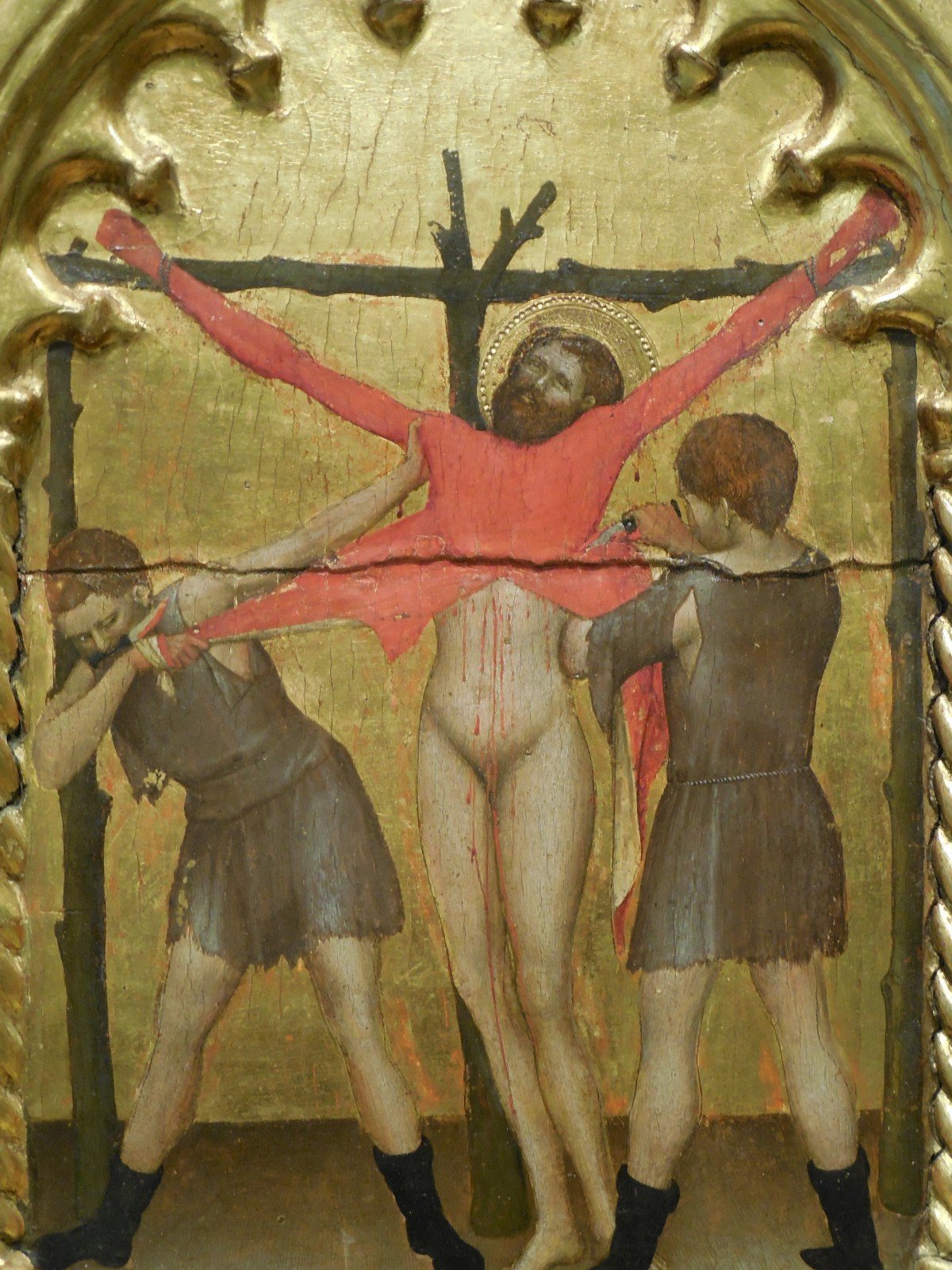Bartholomew… so skinny, so conceptual
- Giovanni Da Milano (Como 1320 approx. – Florence 1369 approx.), Martyrdom of St. Bartholomew, detail of the predella of the altarpiece with Madonna and Child with Saints (1355-1360 approx.) Prato, Museo di Palazzo Pretorio.
- Matteo di Giovanni, “Saint Bartholomew flayed”, Museum of Fine Arts, Budapest (1480).
- Giovanni Battista Tiepolo, “The Martyrdom of St. Bartholomew”, 1722, Venice, Church of San Stae.
- Michelangelo Buonarroti, “St. Bartholomew”, detail of the Last Judgement, Sistine Chapel.
- Marco d’Agrate (Agrate Brianza, 1504 – Milan, about 1574), Statue of St. Bartholomew (1562 approx), Cathedral of Milan, right transept.
According to Christian iconography, the Apostle Bartholomew was martyred by being flayed alive. This savage torture has been depicted in many different ways. Sometimes the saint is pictured holding the knife, which symbolizes of his martyrdom. Other times we are witnessing the martyrdom itself: just before suffering the violence of the blade (as in Tiepolo), when flaying occurs (as in Giovanni Da Milano) or just after this act (as Matteo di Giovanni).
Generally the effect is strongly dramatic in each of the three phases. In fact, when you face this kind of subject, it is really hard not to dwell on the fear of punishment and the blood flowing copiously from the wounds on the skin of the saint. Yet there were artists who have been able to turn such a brutal martyrdom into a conceptual reworking, where martyrdom is not a pretext for showing the dreadfulness of the fact, but rather an opportunity to reformulate the subject through a new language processing. In this regard we can take two examples.
The first one is the famous painting by Michelangelo in the Sistine Chapel. Here the artist portrays St. Bartholomew holding his own skin, like a rumpled dress. Meaningfully the face has been recognized as a self-portrait by Michelangelo.
The second example is the statue of St. Bartholomew which was carved by Marco D’Agrate around 1562 and placed in the right transept of the Cathedral of Milan. Here the saint is depicted with the skin thrown over his shoulders and body like a stole. The subject even inspired an anatomical study of muscles, nerves and veins. And it’s easy to think that Marco D’Agrate (a pupil of Leonardo da Vinci) was interested more in the relationship between art and science than in the one between art and religion.
September 22, 2014





